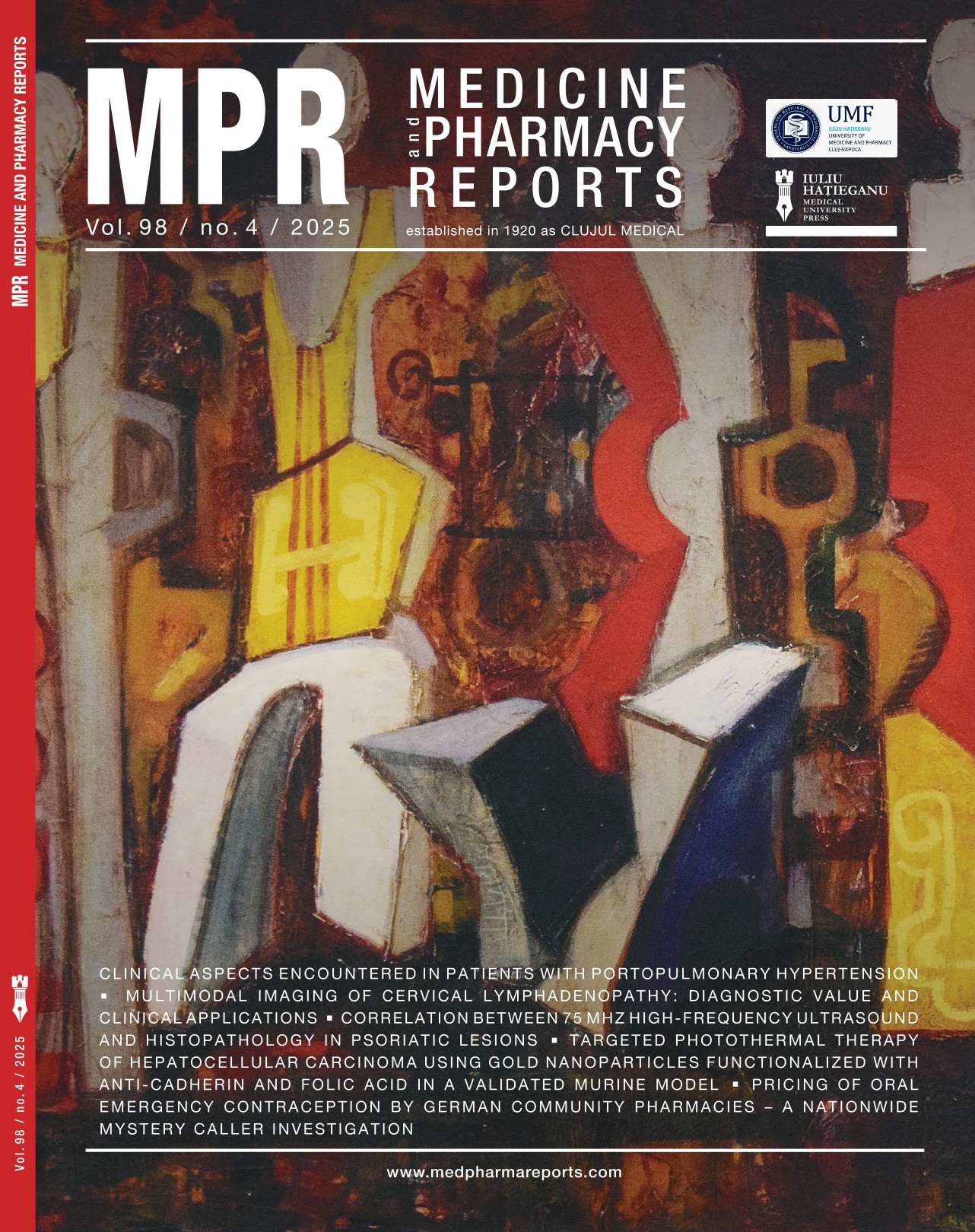Pricing of oral emergency contraception by German community pharmacies – a nationwide mystery caller investigation
DOI:
https://doi.org/10.15386/mpr-2860Keywords:
community pharmacy services, contraception, costs and cost analysis, patient simulation, cross-sectional studies, mystery callsAbstract
Background and aims. The “morning after pill” (oral emergency contraception (EC)) with the active ingredients ulipristal acetate (UPA) and levonorgestrel (LNG) may only be dispensed by community pharmacies (CPs) in Germany. Against the background of free pricing for oral EC as an over-the-counter medicine, German CPs bear a great responsibility with regard to pricing as an important criterion for unrestricted access. The aim was to investigate the pricing of oral EC nationwide. To our knowledge, this is the first study of this type in the world.
Methods. The cross-sectional design of the study was based on the simulated patient methodology (SPM) in the form of mystery calls, which is considered the “gold standard”. Each of the 392 CPs as a representative random sample was called once by one of six trained mystery callers (MCs). At the beginning of the conversation, the MCs asked about the “morning after pill” without naming a specific oral EC. In the conversation about UPA (scenario-related appropriate outcome due to unprotected sexual intercourse four days ago) or LNG preparations (scenario-related inappropriate outcome), the MCs asked about the price of the respective preparation.
Results. The cheapest quoted prices for UPA preparations could be determined in 293 mystery calls and varied from EUR 17.00 to EUR 43.71 (Δ 157%) with a median of EUR 35.75 (interquartile range [IQR] EUR 6.07). The cheapest quoted prices for LNG preparations could be determined in 32 mystery calls and varied from EUR 13.99 to EUR 26.72 (Δ 91%) with a median of EUR 22.99 (IQR EUR 2.99).
Conclusions. The price of UPA preparations is much higher than that of LNG preparations. High price levels and wide price ranges, especially for UPA preparations, could restrict access to oral EC.
Downloads
Published
How to Cite
Issue
Section
License
Copyright (c) 2025 Christian Kunow, Carolin Priepke, Bernhard Langer
The authors are required to transfer the copyright of the published paper to the journal. This is done by agreeing to sign the Copyright Assignment Form. Whenever the case, authors are also required to send permissions to reproduce material (such as illustrations) from the copyright holder.

The papers published in the journal are licensed under a Creative Commons Attribution-NonCommercial-NoDerivatives 4.0 International License.

